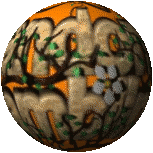Random Ramblings
Random Ramblings: Personal observations on a wide variety of subjects. Photographs of creatures and things that are taken on seeing the unusual as well as everyday things.
A warning was issued yesterday that we may well be in for a swell in the number of wasps and wasp nests this year owing to the type of Winter we have experienced. When anyone mentions the word wasp most of us think of the yellow and black insect that dons a painful punch in the form of a sting. There are however many more varieties the largest of which is the Hornet (Vespa crabro), followed by the two versions that we see around sweet sticky foods and fruits the Common wasp (Vespula vulgaris) and the German wasp (Vespula germanica), the Red wasp (Vespula rufa), the Tree wasp (Dolichovespula sylvestris), the Norwegian wasp (Dolichovespula norwegica), and the Median wasp (Dolichovespula media) a species that arrived in Britain around 1980.
Whilst venturing up into the loft, I was surprised to see the small circular beginnings of a German wasp nest attached to the main beam overhead and neatly packaged in a little space on the right-hand side of the wood. Both the Common and the German wasp nests are created out of a sort of paper which is made by the wasps. German wasp nests differ from the Common wasp nests in their colour, as the German wasp nest is grey in appearance.

German wasp (Vespula germanica), nest
Today has begun with dark clouds hanging low, a persistent rain and a forecast of heavy winds – a sure sign that a drought was announced the other week! A fair portion of Britain is now under a hosepipe ban and so it is almost as though our ancient ancestors decided upon a rain dance, for the showers of April are becoming more and more heavy.
There is something wonderful how a cat has perfected the art of exercise. A stretch here and an arch there, an occasional stroll, an optimistic purr and the creation of a lean, athletic living machine paddles joyfully at the arrival of each new day.
The cat managed to stroll, stretch and nap .. all in between the April showers!



Every so often a specific insect population takes the top spot. I’m not sure whether it has anything to do with certain weather conditions or whether insects just have cycles. Judging by the amount of early Ten-spot ladybirds there are around at the moment this could well be the year of the ladybird.
If we are to have wonderful plagues of this small brightly coloured insect, it couldn’t have come at a better time. The reason I am so excited at the prospect of having swirling masses of one of my most favourite of insects is that it has come at a time when we are being invaded by an Asian strain that has been given the old world name from around 1779 of ‘harlequin.’ Oh how innocuous harlequin sounds to the ear! Yet it is larger and more deadly than every other ladybird we have on our shores and apparently besides eating both the young and fully grown adult ladybirds of the British Isles, also nests inside buildings in large quantities and it bites!!
The British ladybird ten-spot is well noted for its variety in appearance, which if anything helps the harlequin ladybird to stay hidden as it slowly creeps Northwards ..
I have taken a few pictures of some of the wonderful colour displays and variations of the ten-spot which are currently flying about.






Ladybirds

























































